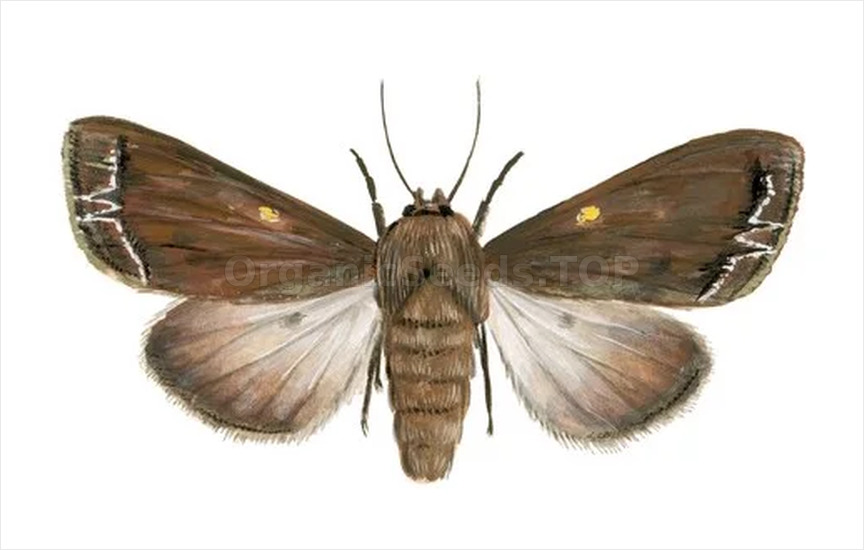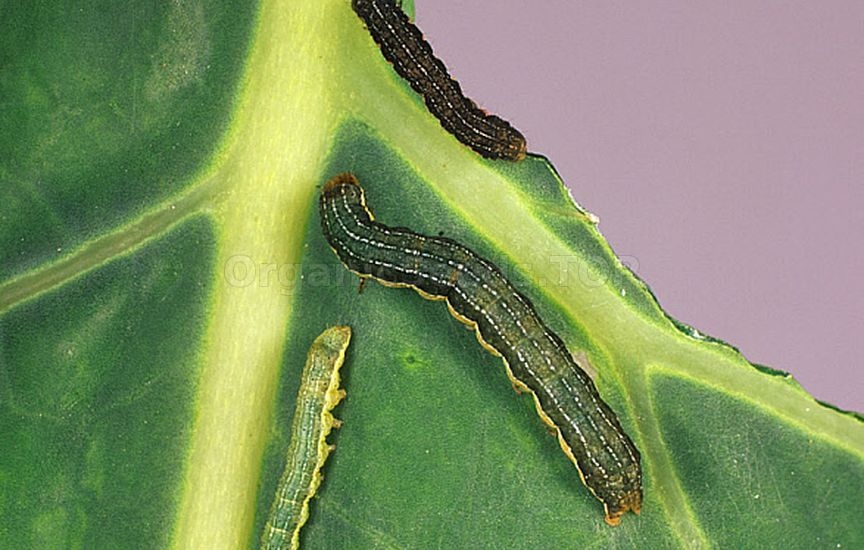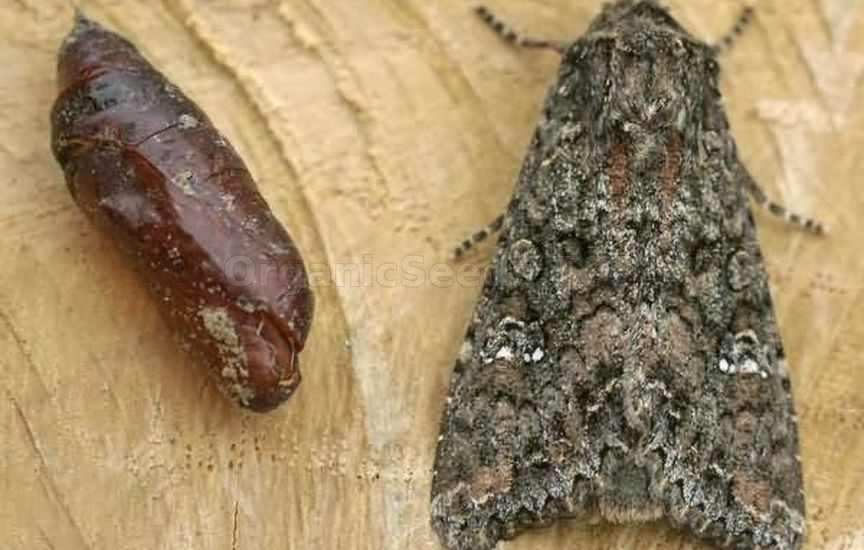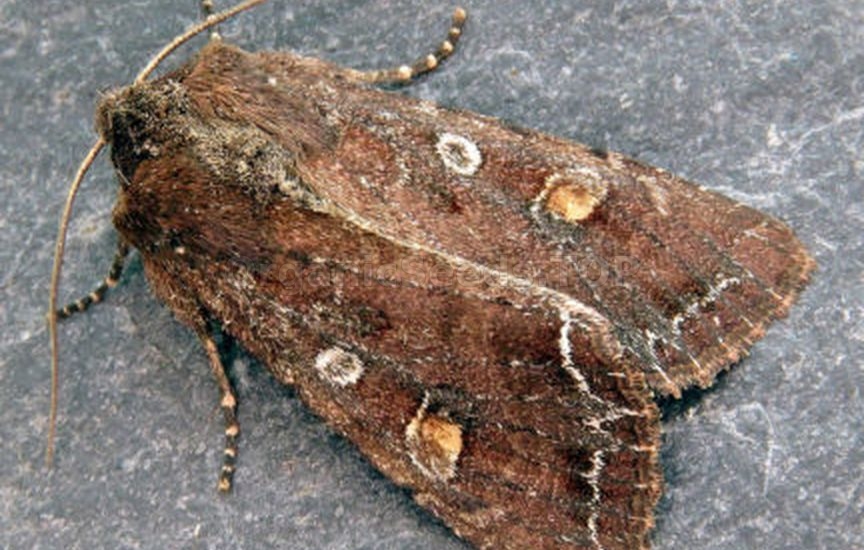Mamestra oleacea - «Lacanobia oleracea» |
 The mamestra oleacea - is a polyphagous pest. Damages cruciferous crops, tomatoes, potatoes, beets, rhubarb, cucumbers, strawberries, sunflowers, tobacco, poppy, and many others. Development is complete. Reproduction is bisexual. The pupae overwinter in the soil. In the north of the range one generation develops, in the south - two. MorphologyImago
A butterfly with a wingspan from 33 to 42 mm. The forewings are reddish-brown. Kidney-shaped spot of orange or yellow color. The round spot is dark. There is a white border around both spots. The submarginal line is white with an M-shaped figure, the teeth of which almost reach the outer edge of the wing. The hind wings are light in color and have a darker outer edge.  Sexual dimorphism Individuals of different sexes differ in the structure of their genital organs. Egg The egg at the beginning of development is light green in color, over time it acquires a grayish-green tint, and then becomes ash-gray. Diameter - 0.7-0.75 mm. The shape of the egg is hemispherical, with 50 ribs at the top. Larva Larva (caterpillar). Length - 28-41 mm. The color of the cover varies. There are green, yellow-brown and red-brown individuals of different shades. The body has small light spots and large black spots with bristles. The head is yellow with a reticulate pattern, the spiracles are yellow with a black rim. There are black spots in front and behind the spiracles, the subspiracular stripe is yellow or orange. Pupa Length - 15-19 mm. The color is chestnut, the cremaster is conical in shape with two processes diverging to the sides. The ends of the processes are expanded and flattened. DevelopmentImago
The flight of butterflies in the central part of Ukraine is observed from the second half of June to the second half of August; in the south of the range, the first generation flies in May - June, and the second - from July to September. Butterflies additionally feed on flowering vegetation. The lifespan of a butterfly is 14-30 days. The time when butterflies emerge from overwintered pupae depends on the climate of the area where the species is located.  Mating period The mating period begins 2-3 days after departure, and egg laying is observed on days 4-7. The fertility of females ranges from 400 to 1100 eggs, with a maximum of 1500 eggs. Females lay eggs on the underside of leaves in clusters of 1-4 layers. There are about 100 pieces in one clutch. Egg Embryonic development lasts 9-12 days. Larva The larva (caterpillar) develops in 30-40 days. She molts five times and goes through six age groups. Younger caterpillars scrape and then skeletonize leaf blades. At an older age, the caterpillars make holes in the leaves and roughly skeletonize. Pupa Caterpillars of the first generation pupate in June, the second - in September-October in the surface layer of soil. The pupae overwinter in the soil.  The mamestra oleacea is a polyphagous species. Caterpillars are harmful. Butterflies feed on pollen from flowering plants. Caterpillars damage leaf blades of cabbage, rutabaga, radish, radishes, turnips, beets, tomatoes, rhubarb, legumes, sunflowers, cucumbers, onions, asparagus, sorrel, carrots, lettuce, flax, potatoes, tobacco, opium poppy, corn, medicinal plants ( belladonna and valerian), trees and shrubs (raspberries, currants, apple trees), grapes, ornamental plants (asparagus, chrysanthemums, cyclamen, carnations, delphinium). In addition, caterpillars are observed feeding on willows, white acacia, swans, wormwood, goosefoot, nettle, and birch. The most favorable plants for feeding caterpillars are from the Asteraceae and Chenopodiaceae families. On them, caterpillars develop quickly and give rise to the most fruitful butterflies.
You may need:«Mamestra oleracea» trapPheromone trapsGlue trap (single adhesive cardboard) 205x125 mm |
|
|
